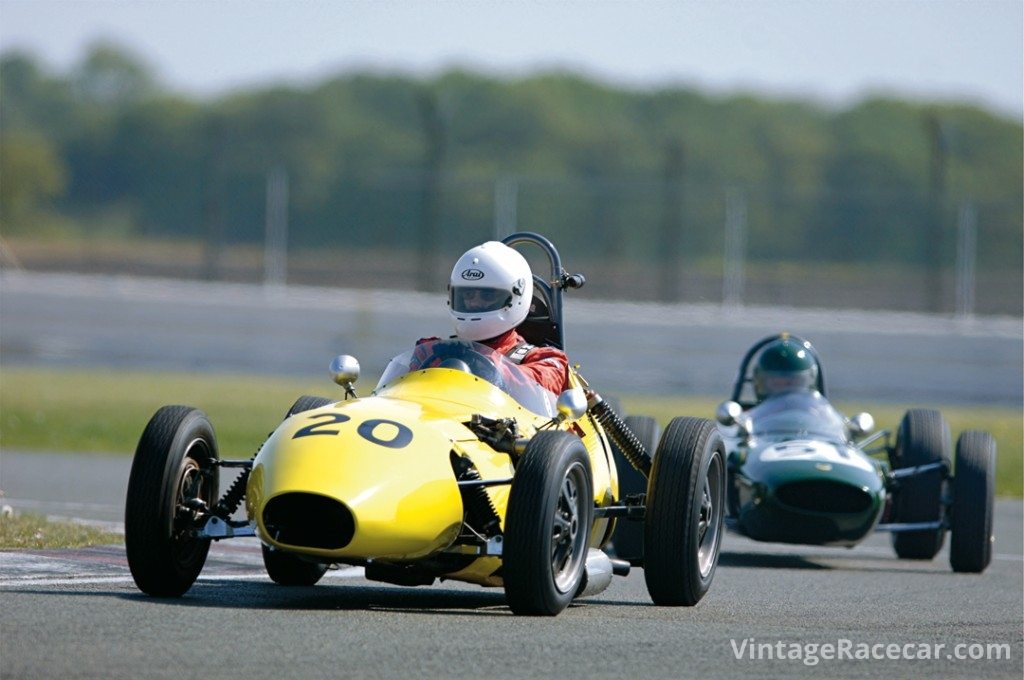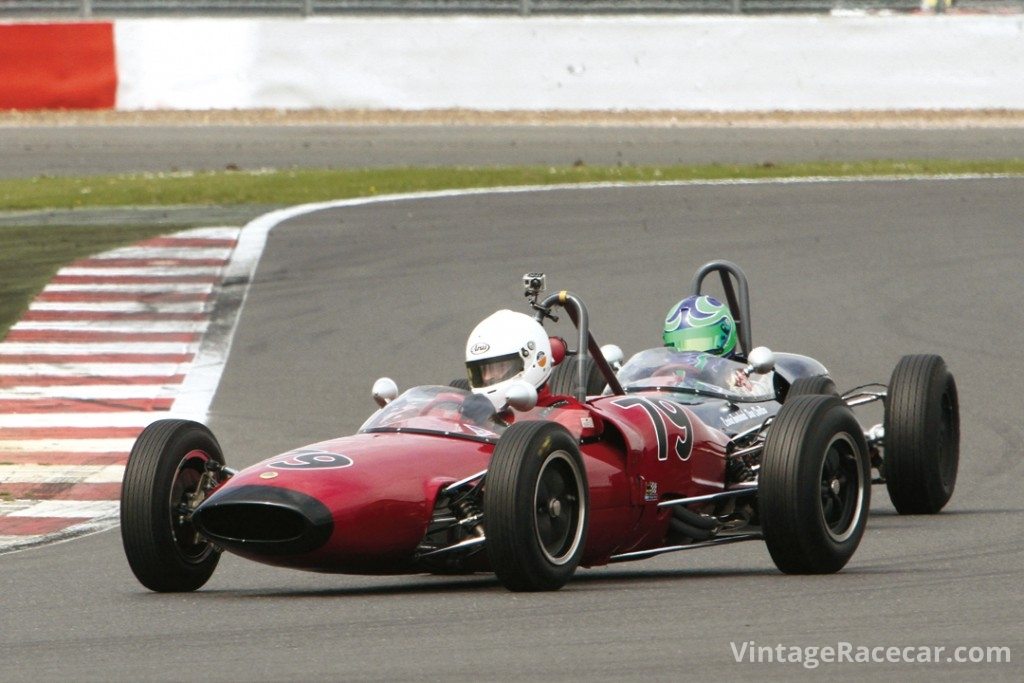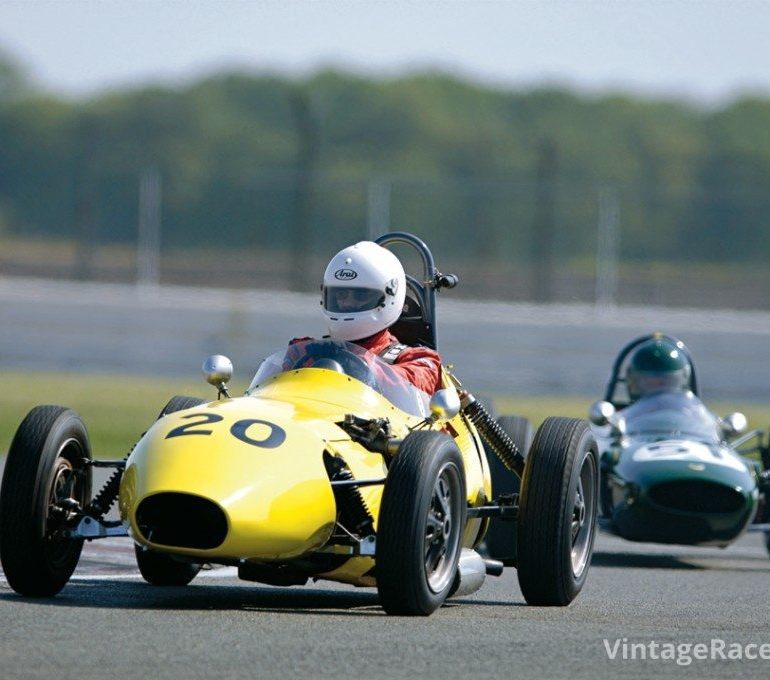The Formula Junior category was introduced in Italy in 1958 by Count Giovanni Lurani, and in 1959 became an International Formula. Shortly thereafter, in 1960, the British began to take a serious interest in the category, beginning the rivalry between British and Italian cars.
The original FIA Formula Junior regulations defined the cars as single-seater racing cars with the mechanical components coming from a touring car of which a minimum of 1,000 units had been produced in 12 months time. The chassis were built within certain dimensions and to a weight minimum. The engine, gearbox, brakes, etc., had to be as derived from a production touring car. Therefore, the great variety of choices on different cars, such as engines from BMC, Fiat and Ford and gearboxes from Citroen, Renault and VW.
Formula Junior was in effect Formula Two and Formula Three combined with a maximum engine capacity of 1-liter or 1.1-liters, depending on the car weight. It was a single-seater training ground for young drivers from 1959 to 1963. It produced an endless list of future Formula One stars including Chris Amon, Richard Attwood, Peter Arundell, Jim Clark, Denis Hulme, Peter Revson, Jochen Rindt, Jo Siffert, and John Surtees.
Lotus was the dominant force in Formula Junior, wining the British National Championship from 1960-1963; however, a dozen other small companies also produced cars including Bandini, Brabham, Cooper, Elva, Lola, Merlyn, Osca, Stanguellini and Taraschi.
These were in effect mini Grand Prix teams with first class drivers, designers, and mechanics. Ironically, Formula Junior, which was started as a cost-saving effort, was ultimately stopped because the Formula One technology of the day was being used in this lower formula. The monocoque design of the Lotus 27 was a prime example of this technology.
Today, the large number of premium venues combined with very competitive grids has translated into a very strong market for Formula Juniors, especially in Europe. Having a legitimate Formula Junior allows one the opportunity to race at Goodwood, the Monaco Historic, and the Monterey Reunion, to name but a few events.
1959 Elva 100

1962 Lotus 22

Colin Chapman’s Lotus cars furthered the development of the successful Lotus 20 model. The Type 22 had a slightly improved tubular frame with modified rear bracing, improved suspension links and the engine tilted over at an angle; most were powered by the Ford 105E-based 1098-cc engine modified by Cosworth with Weber 40 DCO carburetors. Gearbox was a Hewland MK 6, 5-speed. Brakes were 9-inch Girling discs all around, with Girling calipers, while the wheels were Lotus magnesium 13-inch bolt on. Suspension was wishbone, fully independent with a rear upper link and coil springs with shock absorbers. Bodywork in fiberglass was sleek and had a low profile, with 77 examples of the Lotus 22 built. Peter Arundel became the lead Lotus driver and showed just how good he and the 22 were—winning 18 races and finishing 2nd three times from 25 starts to win the championship. Another example of Chapman’s design expertise. Today, these great cars are eligible for the historic Formula Junior championship and many historic run groups, including a class at the Monaco Historic Grand Prix. They provide exciting competitive racing and value for the owner.
Criteria Used For Assessing Valuations for this Guide:
- Degree of Originality
- Overall Condition, Restoration
- Technology, Design, Coachbuilder
- Production Numbers/Rarity
- Competition History
- Ownership History, Documentation
- Modern Event Eligibility
Regional Variances
The prices stated in this guide are based on U.S. values. The values of historic racing cars can vary as much as 25%-35% in other countries, depending on local market appeal, currency rates, import duties, and VAT. Most of the time, we are able to document known sales or closed escrows, as they say in real estate. When this is not possible, a logical estimate of the car’s value is given, based on its sales history and relationship to cars of its type.
The prices stated in this guide are based on U.S. values. The values of historic racing cars can vary as much as 25%-35% in other countries, depending on local market appeal, currency rates, import duties, and VAT.
LEVEL |
VALUATION CATEGORIES |
|---|---|
I |
The best combination of all criteria. |
II |
Satisfies mid-range of criteria. |
III |
In need of restoration. Meets only a few points of criteria |




